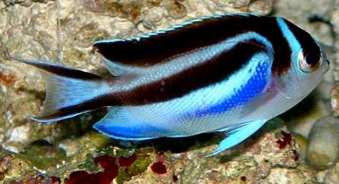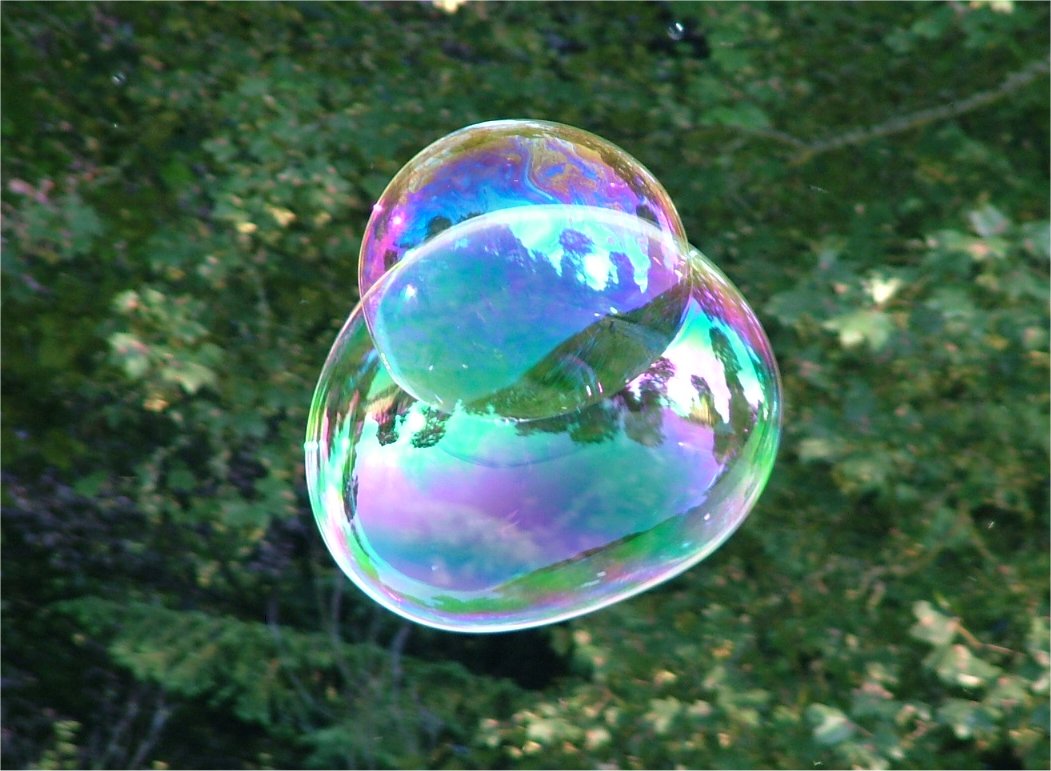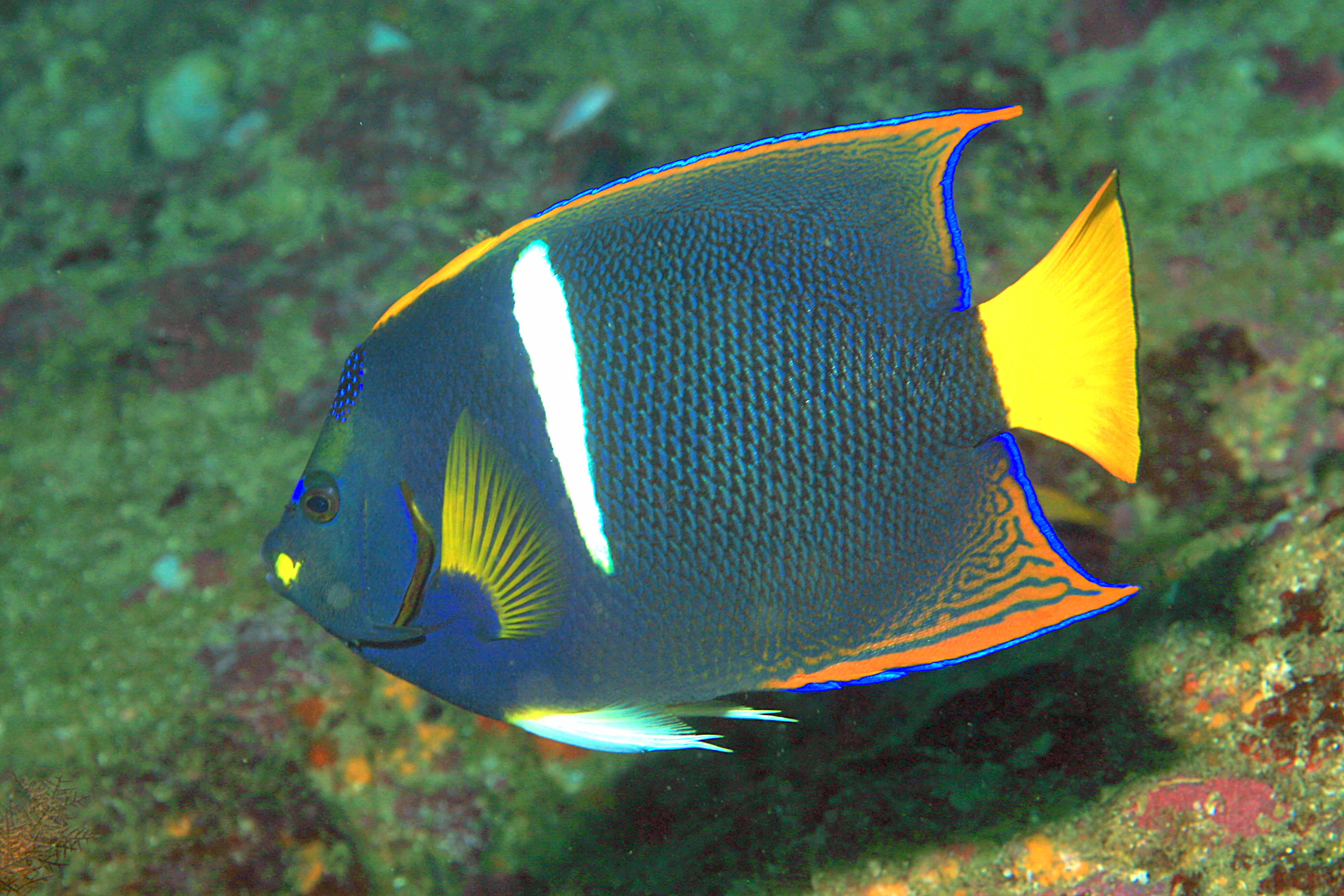|
Pomacanthid
Marine angelfish are perciform fish of the family Pomacanthidae. They are found on shallow reefs in the tropical Atlantic, Indian, and mostly western Pacific Oceans. The family contains seven genera and about 86 species. They should not be confused with the freshwater angelfish, tropical cichlids of the Amazon Basin. Description With their bright colours and deep, laterally compressed bodies, marine angelfishes are some of the more conspicuous residents of the reef. They most closely resemble the butterflyfishes, a related family of similarly showy reef fish. Marine angelfish are distinguished from butterflyfish by the presence of strong preopercle spines (part of the gill covers) in the former. This feature also explains the family name Pomacanthidae; from the Greek πομα, ''poma'' meaning "cover" and ακάνθα, ''akantha'' meaning "thorn". Many species of marine angelfishes have streamer-like extensions of the soft dorsal and anal fins. The fish have small mouths, rela ... [...More Info...] [...Related Items...] OR: [Wikipedia] [Google] [Baidu] |
French Angelfish
''Pomacanthus paru'', also known by its common name the French angelfish, is a slow growing coral reef fish from the Caribbean. The species is of the family Pomacanthidae, which contains other species of marine angelfish. Its closest relative is the grey angelfish (''P. arcuatus''). Taxonomy The French angelfish was first formally described as ''Chaetodon paru'' by the German physician and naturalist Marcus Elieser Bloch (1723–1799) with the type locality given as Brazil and Jamaica. The species is placed by some authorities in the subgenus ''Pomacanthus'',. The specific name of this species, ''paru'' is the Portuguese name for this species. Description The French angelfish has a deep but vertically compressed body, making it appear flattened from the front. The head is deep, with a short snout that ends in a small mouth containing numerous bristle-like teeth. There is an obvious spine at the corner of the preoperculum while there are no spines on the operculum or under ... [...More Info...] [...Related Items...] OR: [Wikipedia] [Google] [Baidu] |
Dorsal Fin
A dorsal fin is a fin on the back of most marine and freshwater vertebrates. Dorsal fins have evolved independently several times through convergent evolution adapting to marine environments, so the fins are not all homologous. They are found in most fish, in mammals such as whales, and in extinct ancient marine reptiles such as ichthyosaurs. Most have only one dorsal fin, but some have two or three. Wildlife biologists often use the distinctive nicks and wear patterns which develop on the dorsal fins of whales to identify individuals in the field. The bones or cartilages that support the dorsal fin in fish are called pterygiophores. Functions The main purpose of the dorsal fin is usually to stabilize the animal against rolling and to assist in sudden turns. Some species have further adapted their dorsal fins to other uses. The sunfish uses the dorsal fin (and the anal fin Fins are moving appendages protruding from the body of fish that interact with water to ge ... [...More Info...] [...Related Items...] OR: [Wikipedia] [Google] [Baidu] |
Benthic
The benthic zone is the ecological region at the lowest level of a body of water such as an ocean, lake, or stream, including the sediment surface and some sub-surface layers. The name comes from the Ancient Greek word (), meaning "the depths". Organisms living in this zone are called benthos and include microorganisms (e.g., bacteria and fungi) as well as larger invertebrates, such as crustaceans and polychaetes. Organisms here, known as bottom dwellers, generally live in close relationship with the substrate and many are permanently attached to the bottom. The benthic boundary layer, which includes the bottom layer of water and the uppermost layer of sediment directly influenced by the overlying water, is an integral part of the benthic zone, as it greatly influences the biological activity that takes place there. Examples of contact soil layers include sand bottoms, rocky outcrops, coral, and bay mud. Description Oceans The benthic region of the ocean begins at the ... [...More Info...] [...Related Items...] OR: [Wikipedia] [Google] [Baidu] |
Alga
Algae ( , ; : alga ) is an informal term for any organisms of a large and diverse group of photosynthetic organisms that are not plants, and includes species from multiple distinct clades. Such organisms range from unicellular microalgae, such as cyanobacteria, '' Chlorella'', and diatoms, to multicellular macroalgae such as kelp or brown algae which may grow up to in length. Most algae are aquatic organisms and lack many of the distinct cell and tissue types, such as stomata, xylem, and phloem that are found in land plants. The largest and most complex marine algae are called seaweeds. In contrast, the most complex freshwater forms are the Charophyta, a division of green algae which includes, for example, ''Spirogyra'' and stoneworts. Algae that are carried passively by water are plankton, specifically phytoplankton. Algae constitute a polyphyletic group because they do not include a common ancestor, and although eukaryotic algae with chlorophyll-bearing plastids seem ... [...More Info...] [...Related Items...] OR: [Wikipedia] [Google] [Baidu] |
Zooplankton
Zooplankton are the heterotrophic component of the planktonic community (the " zoo-" prefix comes from ), having to consume other organisms to thrive. Plankton are aquatic organisms that are unable to swim effectively against currents. Consequently, they drift or are carried along by currents in the ocean, or by currents in seas, lakes or rivers. Zooplankton can be contrasted with phytoplankton (cyanobacteria and microalgae), which are the plant-like component of the plankton community (the " phyto-" prefix comes from , although taxonomically ''not'' plants). Zooplankton are heterotrophic (other-feeding), whereas phytoplankton are autotrophic (self-feeding), often generating biological energy and macromolecules through chlorophyllic carbon fixation using sunlightin other words, zooplankton cannot manufacture their own food, while phytoplankton can. As a result, zooplankton must acquire nutrients by feeding on other organisms such as phytoplankton, which are generally smaller t ... [...More Info...] [...Related Items...] OR: [Wikipedia] [Google] [Baidu] |
Genicanthus
''Genicanthus'' is a genus of marine angelfishes in the family Pomacanthidae. Known commonly as swallowtail or lyretail angelfish, these fishes are so-named for the distinctive shape of their tailfins. This genus of angels, in comparison to the other species found in hobby aquaria, are a good choice for beginners as they do not get nearly as large as some of the others. Another unique attribute is that swallowtail angels will tolerate each other and can be kept in pairs or as a single male with a harem, though it is typically best to add them to a tank at the same time. If added on by one, the angel which is added first may become aggressively territorial towards any new additions. Unlike others in the family Pomocanthidae, the angelfish species in the genus ''Genicanthus'' are generally considered to be reef safe. Also unlike most other members of the Pomacanthidae, those in ''Genicanthus'' are sexually dimorphic, meaning males and females are easily distinguishable. Fish in t ... [...More Info...] [...Related Items...] OR: [Wikipedia] [Google] [Baidu] |
Bluering Angelfish
The bluering angelfish (''Pomacanthus annularis''), also known as the annularis angelfish and the blue king angelfish, is a species of marine ray-finned fish, a marine angelfish belonging to the family Pomacanthidae. It is member of the genus ''Pomacanthus'', composed of large marine angelfish. Distribution The bluering angelfish can be found in the Indo-West Pacific oceans from East Africa, throughout Indonesia and New Guinea to New Caledonia, north to southern Japan. Habitat Bluering angelfishes inhabit coastal rocky coral reefs and may be also encountered in caves or on wrecks, at depths of . Description Bluering angelfish have adults which are mainly yellow with the body marked with obvious arcing blue lines and a blue circle shaped mark above the operculum. They frequently have an elongated tip to the dorsal fin and they have a white caudal fin with a yellow margin. They also have a pair of blue stripes across the face, one runs through the eye and the second is situ ... [...More Info...] [...Related Items...] OR: [Wikipedia] [Google] [Baidu] |
Iridescent
Iridescence (also known as goniochromism) is the phenomenon of certain surfaces that appear gradually to change colour as the angle of view or the angle of illumination changes. Iridescence is caused by wave interference of light in microstructures or thin films. Examples of iridescence include soap bubbles, feathers, butterfly wings and seashell nacre, and minerals such as opal. Pearlescence is a related effect where some or most of the reflected light is white. The term pearlescent is used to describe certain paint finishes, usually in the automotive industry, which actually produce iridescent effects. Etymology The word ''iridescence'' is derived in part from the Greek word ἶρις ''îris'' ( gen. ἴριδος ''íridos''), meaning ''rainbow'', and is combined with the Latin suffix ''-escent'', meaning "having a tendency toward". Iris in turn derives from the goddess Iris of Greek mythology, who is the personification of the rainbow and acted as a messenger of the g ... [...More Info...] [...Related Items...] OR: [Wikipedia] [Google] [Baidu] |
Queen Angelfish
The queen angelfish (''Holacanthus ciliaris''), also known as the blue angelfish, golden angelfish, or yellow angelfish, is a species of Pomacanthidae, marine angelfish found in the western Atlantic Ocean. It is a benthic zone, benthic (ocean floor) warm-water species that lives in coral reefs. It is recognized by its blue and yellow coloration and a distinctive spot or "crown" on its forehead. This crown distinguishes it from the closely related and similar-looking Bermuda blue angelfish (''Holacanthus bermudensis''), with which it overlaps in range and can interbreed. Adult queen angelfish are selective feeders and primarily eat sponges. Their social structure consists of harem (zoology), harems which include one male and up to four females. They live within a territory (animal), territory where the females forage separately and are tended to by the male. Spawn (biology), Breeding in the species occurs near a full moon. The transparent Ichthyoplankton, eggs float in the water ... [...More Info...] [...Related Items...] OR: [Wikipedia] [Google] [Baidu] |
Ciguatera Poisoning
Ciguatera fish poisoning (CFP), also known as ciguatera, is a foodborne illness caused by eating tropical reef fish contaminated with ciguatoxins. Such individual fish are said to be ciguatoxic. Symptoms may include diarrhea, vomiting, numbness, itchiness, dysesthesia, sensitivity to hot and cold, dizziness, and weakness with lethargy. The onset of symptoms varies with the amount of toxin absorbed. If a large quantity of toxins are consumed symptoms may appear within half an hour. If a low amount of toxins are consumed symptoms may take a few days to appear. Diarrhea may last up to four days. Symptoms may last a few weeks to a few months. Heart problems such as slow heart rate and low blood pressure may occur. The specific toxins involved are the ciguatoxins and maitotoxin. They are originally made by a small marine organism, ''Gambierdiscus toxicus'', that grows on and around coral reefs in tropical and subtropical waters. These are eaten by herbivorous fish which in turn are e ... [...More Info...] [...Related Items...] OR: [Wikipedia] [Google] [Baidu] |
Aquarium
An aquarium (: aquariums or aquaria) is a vivarium of any size having at least one transparent side in which aquatic plants or animals are kept and displayed. fishkeeping, Fishkeepers use aquaria to keep fish, invertebrates, amphibians, aquatic reptiles, such as turtles, and aquatic plants. The term ''aquarium'', coined by English naturalist Philip Henry Gosse, combines the Latin root , meaning 'water', with the suffix , meaning 'a place for relating to'. The aquarium principle was fully developed in 1850 by the chemist Robert Warington, who explained that plants added to water in a container would give off enough oxygen to support animals, so long as the numbers of animals did not grow too large. The aquarium craze was launched in early Victorian era, Victorian England by Gosse, who created and stocked the first public aquarium at the London Zoo in 1853, and published the first manual, ''The Aquarium: An Unveiling of the Wonders of the Deep Sea'' in 1854. Small aquariums are k ... [...More Info...] [...Related Items...] OR: [Wikipedia] [Google] [Baidu] |








